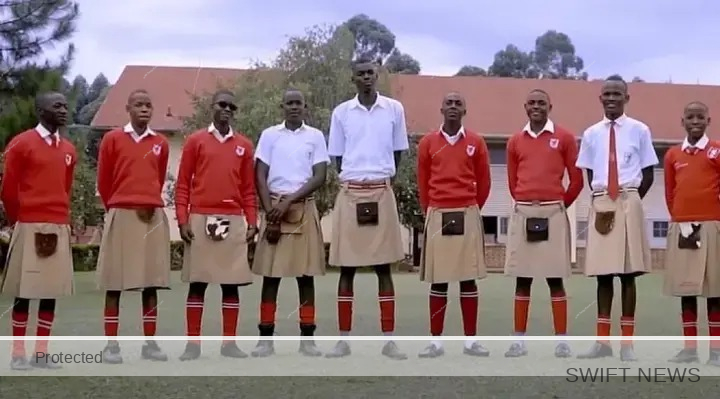
By Our Reporter
In a reflection of shifting attitudes toward gender expression and inclusivity, a small but significant number of schools in Uganda are exploring more flexible uniform policies—most notably, Nyakasura School in Fort Portal, Kabarole District. Currently, it is the only known school in Uganda—and possibly in all of Africa—where male students wear kilts as part of their official uniform.
Established in 1926 by Scottish missionary Lieutenant-Commander Ernest William Eborhard Calwell, Nyakasura School adopted the kilt to reflect its founder’s Scottish heritage. Male students don kilts alongside other traditional accessories such as belts, knee socks, and kilt hoses. While often mistaken for skirts, the school administration emphasizes the cultural and historical significance of the attire, distancing it from assumptions tied to gender identity.
The distinctive uniform has not gone unnoticed. It has sparked widespread conversations about gender norms, cultural identity, and inclusivity in Ugandan educational settings. Despite occasional mockery from peers in other schools, Nyakasura students take pride in the attire, viewing it as a symbol of leadership, uniqueness, and confidence.
More broadly, the concept of gender-inclusive or flexible school uniforms is gaining traction in a few progressive or international schools across Uganda. These institutions are beginning to prioritize comfort, practicality, and self-expression over traditional attire rules that often reinforce rigid gender roles. In these schools, skirts are no longer seen as exclusive to girls but as a viable clothing option for any student who prefers them.
The motivation behind this progressive shift is to foster educational environments where learners feel free to express themselves—regardless of gender identity. Advocates argue that these policies help reduce gender-based discrimination and bullying, while promoting dialogue around equality and cultural norms.
However, the road to broader acceptance is not without resistance. In conservative communities, such policies have faced backlash due to deeply ingrained societal views on gender roles and appearance. Despite this, proponents believe that small steps—like allowing flexible uniform choices—can pave the way for more inclusive and equitable school cultures.
While Nyakasura remains a unique case, its example serves as a powerful catalyst for the broader conversation around identity and freedom of expression in Ugandan schools. It stands as a reminder that the future of education can embrace both tradition and transformation—offering students the confidence to lead, just as they are.
Have An Advert Or Article You Want Us To Publish? Email: swiftnewsug@gmail.com

